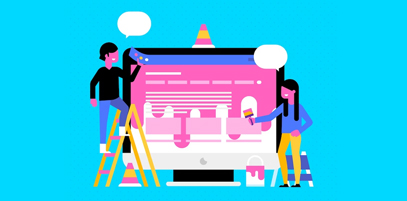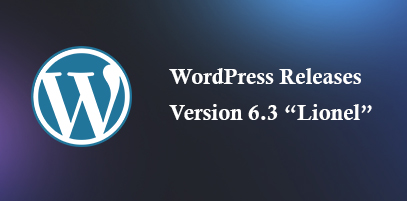Software-as-a-Service (SaaS)
By :- Ilika - Web Guru Awards Team
2.png)
The “as-a-Service” model of cloud computing, providing services over the web, may be a trend that continues to realize traction across the world. Software-as-a-Service (SaaS) offerings are getting the actual methodology for users to access services and merchandise like Adobe artistic Suite and Microsoft workplace.
What is SaaS?
Software as a service (or SaaS) may be a means of delivering applications over the Internet—as a service. rather than putting in and maintaining a software system, you just access it via the web, liberating yourself from advanced software systems and hardware management. SaaS applications are generally referred to as Web-based software systems, on-demand software systems, or hosted software systems. regardless of the name, SaaS applications run on a SaaS provider’s servers. The supplier manages access to the appliance, as well as security, accessibility, and performance.
SaaS provides a whole software system answer that you buy on a pay-as-you-go basis from a cloud service supplier. You rent the utilization of an associate app for your organization and your users connect with it over the web, with an online browser. All of the underlying infrastructure, middleware, app software system, and app information is situated within the service provider’s information center. The service supplier manages the hardware and software system and with the acceptable service agreement, can make sure the accessibility and therefore the security of the app and your information furthermore. SaaS permits your organization to urge quickly up associated running with an app at the lowest direct value.
What will 'as a service’ mean?
Consider the distinction between valet parking and rental a parking spot. Valet parking may be a service, whereas a parking spot may be a product, even if each gives a similar profit to the customer: an area to go away their automobile. historically, software system vendors sold out their software system to users as a product. However, within the SaaS model, they actively give and maintain the software system for his or her users, via the cloud. They host and maintain the databases and code necessary for the appliance to run, and that they run the appliance on their servers. Thus, SaaS is an additional sort of a service than a product.
What is the cloud?
"The cloud" refers to remote internet servers in numerous information centers that host databases and run application code. Cloud suppliers deliver their services to customers or finish users via the web.
What are the 3 main cloud service models?
SaaS is one of every of the 3 major cloud service models. The cloud service models are classes of services that cloud suppliers – in different words, corporations that own and operate servers in numerous information centers – offer to users and businesses.
The 3 cloud service models are:
- IaaS (Infrastructure-as-a-Service): Cloud computing infrastructure – servers, databases, etc. – that a cloud supplier manages. corporations will build their own applications on IaaS rather than maintaining their applications' backends themselves.
- PaaS (Platform-as-a-Service): One level up from IaaS, PaaS includes development tools, infrastructure, and different support for building applications.
- SaaS (Software-as-a-Service): Absolutely engineered cloud applications.
SaaS Characteristics
A good thanks to perceiving the SaaS model is by thinking of a bank, that protects the privacy of every client whereas providing a service that's reliable and secure—on an enormous scale. A bank’s customers all use similar money systems and technology without fear concerning anyone accessing their personal info while not authorization.
The key characteristics of the SaaS model:
- Multitenant design: A multitenant design, during which all users and applications share one, common infrastructure and code base that's centrally maintained. as a result of SaaS, seller purchasers are all on a similar infrastructure and code base, vendors will introduce additional quickly and save the precious development time antecedently spent on maintaining various versions of obsolete code.
- Easy Customisation: The ability for every user to simply customize applications to suit their business processes while not touching the common infrastructure. owing to the means SaaS is architected, these customizations are distinctive to every company or user and are invariably preserved through upgrades. meaning SaaS suppliers will build upgrades additional usually, with less client risk and far lower adoption value.
- Better Access: Improved access to information from any networked device whereas creating it easier to manage privileges, monitor information use, and guarantee everybody sees similar info at a similar time.
- SaaS Harnesses the buyer internet: Anyone at home with Amazon.com or My Yahoo! is at home with the online interface of typical SaaS applications. With the SaaS model, you'll be able to customize with point-and-click ease, creating the weeks or months it takes to update ancient business software systems that appear dispiritedly quaint.
What are the benefits and drawbacks of victimization SaaS?
The SaaS model incorporates a range of execs and cons, though for contemporary businesses and users the execs of SaaS usually outweigh the cons. Here are a number of the benefits and drawbacks of victimization SaaS applications:
- Advantage: Access from anyplace, on any device. Typically, users will log into SaaS applications from any device and any location. This offers a good deal of flexibility – businesses will permit staff to control everywhere the globe, and users will access their files despite they're. additionally, most users use multiple devices and replace them often; users do not have to be compelled to install SaaS applications or purchase new licenses anytime they switch to a brand new device.
- Advantage: No would like for updates or installations. The SaaS supplier updates associated patches on the appliance on a current basis.
- Disadvantage: the requirement for stronger access management. The multiplied accessibility of SaaS applications conjointly means verificatory user identity and dominant access levels become vital. With SaaS, structure assets are not any longer unbroken at intervals an interior network breaks free the surface world. Instead, user access is predicated on user identity: if somebody has the correct login credentials, they're granted access. robust biometric authentication, therefore, becomes crucial.
- Disadvantage: seller lock-in. A business could become too dependent on the SaaS application supplier. It's a long associated big-ticket to maneuver to a brand new application if an organization's entire info is kept at intervals from the recent application.
Recent Topics
-
 WordPress.com Launches 100-Year Web Hosting Plan
WordPress.com Launches 100-Year Web Hosting PlanWordPress, the platform that helps people create websites, now offers something rare. It has taken a bold leap into the future with its 100-year web hosting plan. ...
Read MoreBy :- Laura Davidson
-
 5 Best AI Web Design Tools You Can Try
5 Best AI Web Design Tools You Can TryWhy bother with all the effort of creating websites manually when we have amazing AI tools? In fact, using these tools has become one of the most-practiced ...
Read MoreBy :- Tiana K
-
 Role of Animation and Micro-Interactions in User Experience
Role of Animation and Micro-Interactions in User ExperienceIn today's world, almost every brand wants to create a user-friendly interface for its customers. The main aim behind this is to increase customer base and revenue. Now, when it comes...
Read MoreBy :- Laura Davidson
-
 Web Design Trends to Watch Out for in 2024
Web Design Trends to Watch Out for in 2024Web design is a constant-evolving technology landscape. As a web designer, staying tuned with web design trends and keeping your designs up-to-date is important. These trends will affect ...
Read MoreBy :- Esther McGuinness
-
 The Power of Storytelling in Web Design Engaging Users with a Narrative
The Power of Storytelling in Web Design Engaging Users with a NarrativeStories never fail to engage listeners. That’s why web designers are leveraging the art of storytelling in their designs. In web designing, storytelling goes beyond merely usin...
Read MoreBy :- Navkiran Dhaliwal
-
 WordPress Releases Version 6.3 ?“Lionel”
WordPress Releases Version 6.3 ?“Lionel”WordPress 6.3 “Lionel” is out! Now, you’ll be able to create more beautiful and compelling websi...
Read MoreBy :- Tiana K
